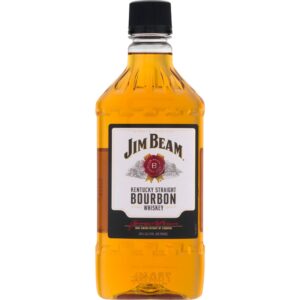5 Interesting Packaging Options For Wines, Whiskeys and Liquors

(Credit: Beam Suntory)
There’s little doubt that changing customer habits and technology have impacted how companies sell themselves to gain new brand champions. The alcohol business, in particular, emphasizes emotional reactions to its goods rather than traditional sales or advertising strategies.
Crowdtap’s latest study looks into why customers prefer one liquor brand over another. The information obtained from these reports can assist firms in the wine and liquor sectors in retooling their packaging to entice prospective consumers. Family and friend recommendations are the most critical factors in a shopper’s alcoholic beverage choices, but innovative marketing is up on the chart.
Design, sustainability, and to-go choices are all being addressed in the evolution of alcohol packaging. Beverage firms are searching for innovative methods to capture and showcase their brand, cut carbon emissions and deliver compliant to-go packaging. Discover more about the standard practices for liquor packaging and the innovative new concepts changing the market.
Top Packaging Ideas For Wine and Liquor
Liquor Spout Pouch
Expand your market by offering retail consumers a variety of alternatives, such as lightweight, portable pouches for picnicking and camping, resealable multi-serve pouches of everyone’s favorite whiskey, wine and liquor, and trial-size pouches that allow sampling.
Help clients save time by providing puréed, pre-mixed, and muddled drink-making components. With this innovative aseptic pouch, you may even deliver lactose-based mixers in shelf-stable pouches with a shelf life of up to 12 months without refrigeration.
Firms looking to save money and be more environmentally friendly are realizing the potential to employ flexible retail packaging for their hard liquor products.
Because stand-up liquor spout pouches are lighter and less bulky than cans and bottles, they are easier to transport and use less fuel. This packaging style is more user-friendly, allowing customers to mix beverages more simply, and it generates less trash in landfills than cans or bottles.
Miniature Bottles of Alcohol
Single-serve alcohol packaging, formerly reserved for convenience stores, was given new life by the previous generation. RTD cups of wine launched a trend that developed a broader market for wine in cans, taking a cue from hard alcohol firms. The 50ml size of sample, single shot-sized pours of whiskey are also familiar.
However, researchers are included this in their alcohol packaging study because of an upcoming opportunity. Because of the epidemic, booze delivery became a reality.
A service that began with cases of beer, wine bottles, and fifths of alcohol has evolved into an experience. Alcohol delivery firms can create a customized container with everything required to prepare a mixed drink. You can also sell this pre-packaged item for your brand to make things easy for them.
Meal packages supplied by D2C firms and grocery shops are another example. Instead of a bulk supply, they provide you with enough ingredients to make supper. This strategy is made possible by little bottles of alcohol.
Alcohol brands may produce these ready-to-mix products that look great on the retail shelf as a packaged solution. This is a fantastic concept for any pure distillery looking to compete with hard seltzers in a can.
Bag-in-Box (BIB)
Bag-in-box is one of the quickest-increasing wine packaging categories. This was evident before Covid and is considerably more so now. This container is mainly used for cheap bulk wine. However, as customer views regarding bag-in-box continue to shift, additional wine alternatives should become accessible.
Shipping wines in a bag-in-box is an excellent way to reduce your carbon impact during transportation. They are light and properly fashioned in rectangles to optimize storage space. In reality, everyone in the manufacturing chain benefits from the low cost of the packaging. They are less expensive to fill and transport for producers, and they pass the cost savings to consumers.
Overall, this is an intriguing category since it is low-cost and has the lowest carbon impact of any wine container in terms of transport and shipping. Because of its rectangular shape and efficient use of space, this container is far superior to plastic bottles for shipment.
Because BIB has a limited shelf life of 9 months, you can not use it for wines intended for cellaring.
Nonetheless, BIB sales are rapidly increasing. This has resulted in additional wine varieties available for purchase in California. Hopefully, this will also imply that store workers will become more knowledgeable about changing merchandise on the shelf.
Aluminum Cans
Cans have long been a popular packaging solution in the alcohol business, primarily for beer. Thanks to improved package sizes, wine, and other liquor enthusiasts may now drink straight from the can. Aluminum cans are an excellent choice for winemakers for a variety of reasons.
Glass bottles can be difficult to work with. To minimize breaking when shipping a glass wine bottle, users must be careful how they pack it. They’re undoubtedly surrounded by signs that indicate no glass permitted at the pool or beach. When they package wine and other liquors in aluminum cans, it is significantly easier to carry. Furthermore, wine drinkers do not need to bring a corkscrew!
Some customers are hesitant to commit to an entire bottle of a new brand. In the absence of lesser sizes, people may choose a previous experience since they know they love it. Cans enable customers to sample more wine varieties and discover new favorites.
Nowadays, environment-conscious packaging is required. Metal cans are more environmentally friendly than typical glass bottles because aluminum is more likely to be repurposed than glass. Aluminum’s lighter weight makes it easier to transport, lowering carbon footprints and emissions.
Wine and liquor drinkers tend to be older, and the sector has struggled to attract younger customers. Aluminum cans can assist you in reaching a more youthful market that has been sluggish to embrace wine. Younger consumers are used to consuming beer, cider, and seltzers in cans. Wine in cans is easier to transport to a beach day, party, or road trip.
Plastic Liquor Bottles
If you’re not quite ready to ditch the aesthetic of a classic wine and liquor bottle but are exploring other packaging choices, plastic bottles could be worth a go. While they lack the beauty of a glass container, they accomplish the same effect without the inconvenience of glass.
Plastic wine bottles, like liquor spout pouches and aluminum cans, make transporting wine easier. Your customers don’t have to worry about unintentionally shattering a bottle on the way to the pool or beach where glass is not permitted or carrying a couple of bottles to the book club. Some whiskey companies have adopted plastic for travel-friendly bottling, with Wild Turkey and Jim Beam being a major examples.
Wines and liquors will chill faster in the fridge since plastic is thinner than glass. This allows customers to enjoy your product at the optimal temperature more quickly than if they had to wait for a standard bottle to cool.
The glass is relatively hefty, especially when filled with wine. Transporting cases of wine or other alcoholic beverages in conventional glass bottles boosts carbon emissions and, consequently, your carbon footprint. Instead, plastic containers weigh around one-eighth the weight of glass bottles, making product transportation a new ecologically benign activity.
Bottom Line
Regarding alcohol manufacturing and packaging, the status is no longer sufficient to remain competitive and accommodate customers’ changing purchasing habits. Savvy consumers nowadays are deliberate in how and where people spend their money.
Above all, they want to promote businesses trying to improve communities via various programs, including sustainability. Improving liquor packaging is one strategy to address these concerns while still appealing to the current customer.

